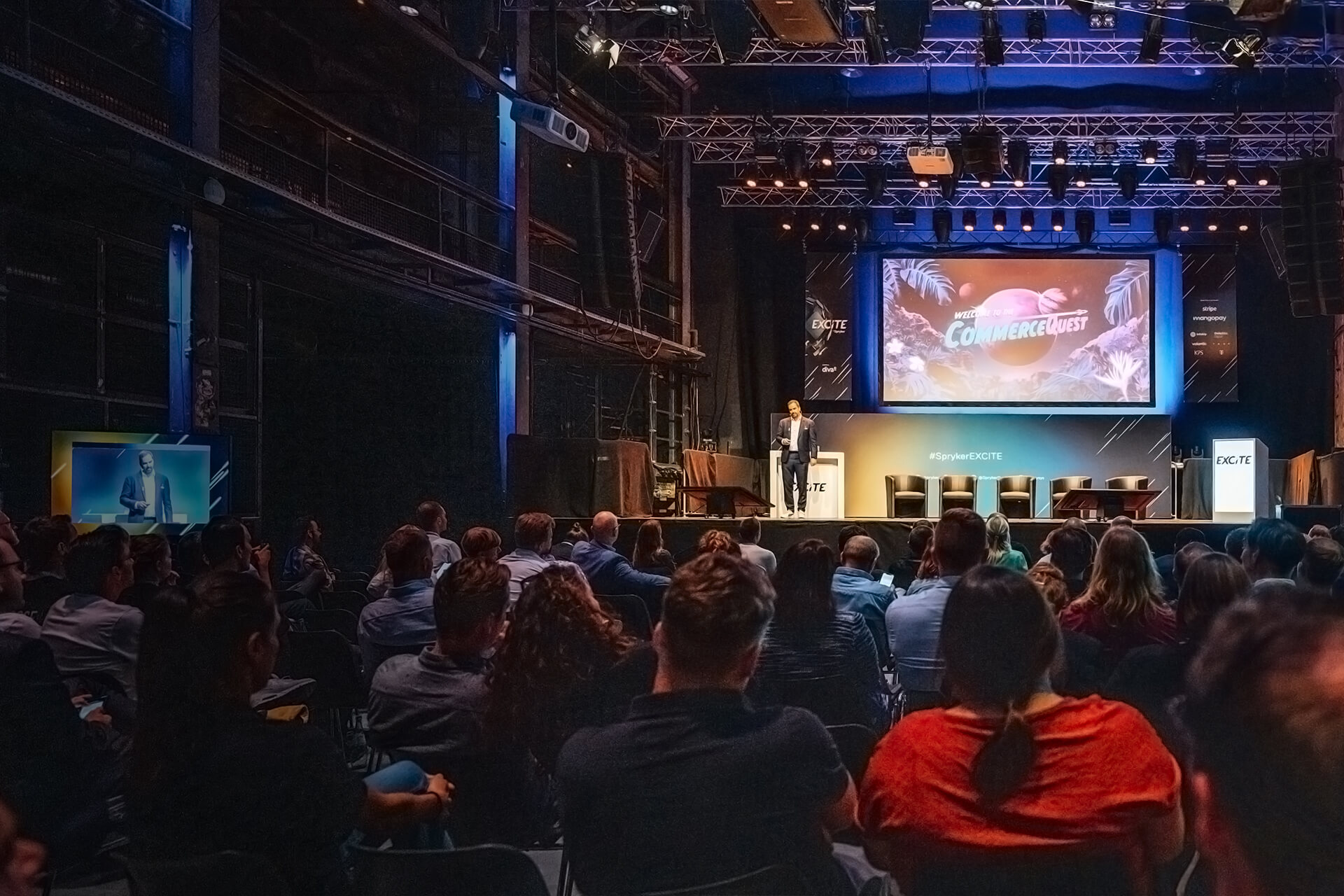Spryker EXCITE
Adapting to a New Era of Global Trade
Global trade is undergoing a fundamental shift, as businesses confront economic volatility, political upheaval, and rising customer expectations. This blog reveals how leaders across industries are trading in long-term blueprints for agile strategies rooted in resilience, reinvention, and pragmatic digital transformation.


In today’s increasingly complex world, global trade is no longer governed solely by the invisible hand of market forces. A confluence of economic uncertainty, political shifts, technological disruption, and evolving customer expectations is forcing business leaders to rethink everything, from supply chains and investment priorities to product strategies and organizational design.
To better understand how companies are navigating these turbulent waters, we interviewed leaders from a wide range of industries and regions. What emerged was a striking mix of resilience, realism, and reinvention. This blog distills the common themes, divergent strategies, and future-forward mindsets shaping how businesses are adapting to this new era of global trade.
The Macroeconomic Climate: From Optimism to Operational Caution
Across interviews, it became clear that companies are in a “watchful waiting” mode. Political volatility, from tariff wars to unpredictable legislation, has led many to either pause investments or radically localize operations. One leader cited domestic sourcing (90% local suppliers) as a key defense against global supply chain shocks. Another noted a strategic pullback from overexposure to any one geography.
In the U.S., shifting regulatory conditions have triggered both anxiety and action. Expansion plans have been frozen in some cases, while others have doubled down on markets perceived to be more stable in the long term. What unites these perspectives is a desire to remain agile and diversify risk: geographically, economically, and operationally.
Digital Commerce is Rising, But It’s Not the Whole Story
While digital transformation is widely recognized as necessary, its maturity level and execution vary greatly. In B2B industries especially, customer expectations are becoming more hybrid. Buyers increasingly rely on digital tools for research and comparison but still expect the option to transact via phone or email.Companies are under pressure to provide seamless, omnichannel experiences that unify traditional and digital touchpoints.
For global firms, digital unification is more than just a UX challenge. It’s a structural one. With operations in dozens of countries, some leaders described their internal systems as fragmented and cumbersome, with disconnected platforms and overlapping product catalogs in multiple languages. For many, the need for orchestration and simplification has overtaken the push for flashy innovation.
AI and Automation: Inevitable but Uneven
Artificial intelligence is one of the most discussed and least uniformly deployed tools in the modern enterprise toolkit. Some leaders are bullish on AI’s role in solving talent shortages, improving customer experience, and supporting decision-making across functions like pricing, fulfillment, and inventory management. Others are cautiously exploring its potential, aware of regulatory and ethical constraints, particularly in highly regulated sectors like healthcare and medical devices.
Internally, AI is being tested in R&D, infrastructure optimization, and business analytics. Externally, it is beginning to appear in products and services that help customers increase productivity and automate complex processes. Still, skepticism remains. For many, AI remains “a solution in search of a problem” – valuable, but in need of clearer, safer application frameworks.
Strategic Pivots: From Growth-at-All-Costs to Resilience-First
Gone are the days of five-year transformation plans and growth-at-all-costs mindsets. Leaders are embracing smaller, faster cycles of experimentation with more immediate ROI. In the automotive and industrial sectors, investments are being funneled into areas with sub-12-month payback periods, especially in aftermarket commerce and cybersecurity.
Other industries, like life sciences and healthcare, are shifting from a posture of risk mitigation to one of opportunity evaluation, prioritizing flexible, revenue-generating initiatives over conservative budgeting. This shift is echoed in the adoption of more agile vendor models, particularly Platform-as-a-Service (PaaS), which balances control with scalability and affordability.
Common Threads Across Industries
Despite the diversity of perspectives, several universal truths emerged:
- Agility over predictability: With geopolitical instability making long-term planning difficult, companies are investing in modular, decentralized systems that allow them to pivot quickly when needed.
- Customer centricity as a growth lever: Whether it’s unifying fragmented customer experiences or offering self-service capabilities, businesses are aligning closer to their buyers’ expectations.
- Security as a business enabler: Especially in sensitive sectors, cybersecurity is no longer a back-office concern but a frontline priority impacting vendor decisions, product design, and governance.
- Decentralization vs. control: Some companies are decentralizing operations for resilience, while others, especially those implementing AI, are centralizing governance to ensure compliance and reduce risk.
Final Thoughts: Navigating With Intent
This new era of global trade calls for more than adaptation. It demands intent. Leaders must balance speed with caution, technology with usability, and innovation with structure. The ability to thrive will come not from guessing what’s next but from building organizations nimble enough to shift when it comes.
One leader summed it up best: “We’re not going back to five-year plans. Efficiency may go down, but resilience and robustness will go up”.
In other words, the companies that survive and grow won’t be those who avoid disruption, but those who prepare to move through it.

Learn from other companies how they are turning uncertainty into competitive advantage at EXCITE 2025 taking place on September 25 in Berlin.
Join us at EXCITE- Global Market Trends
